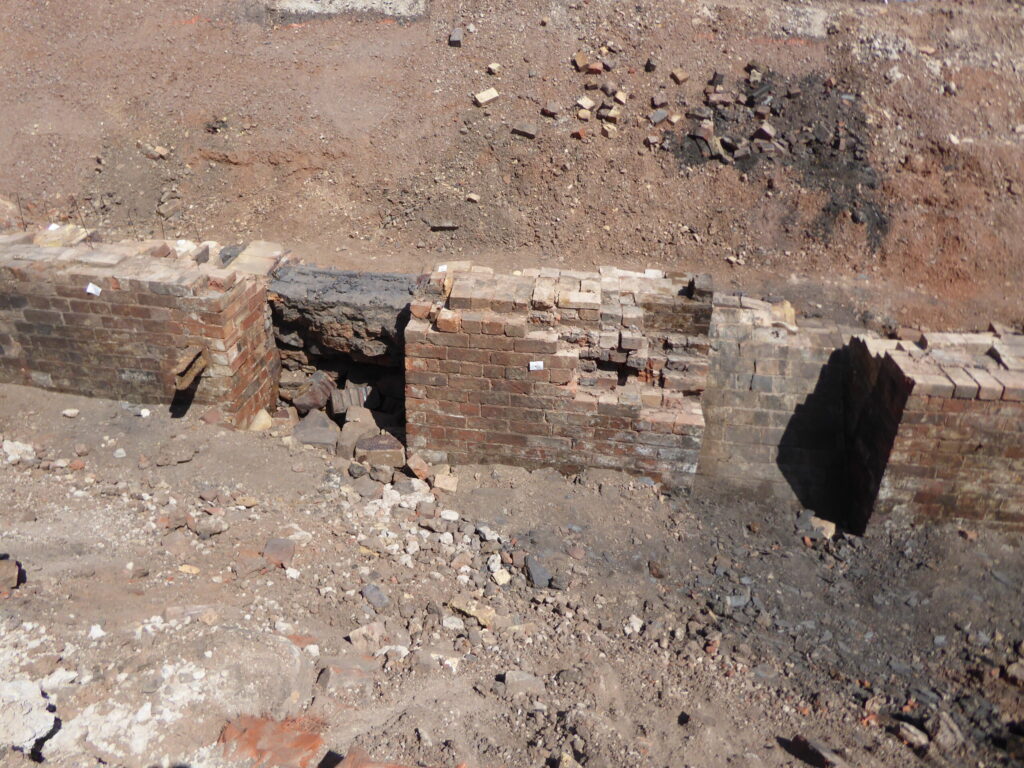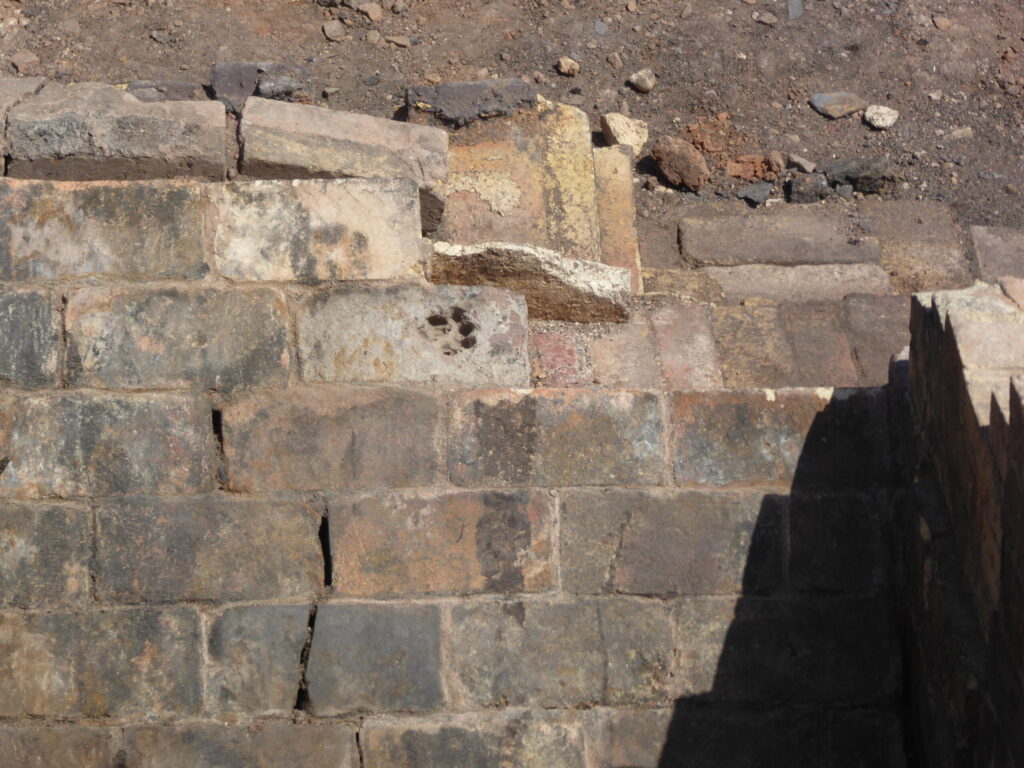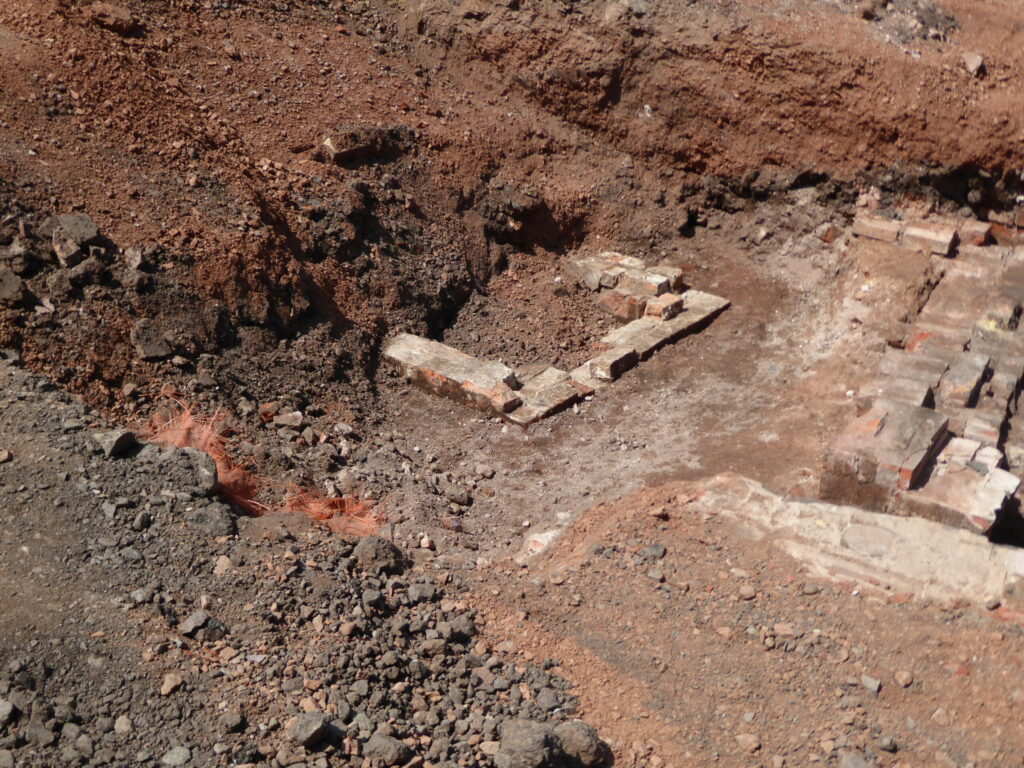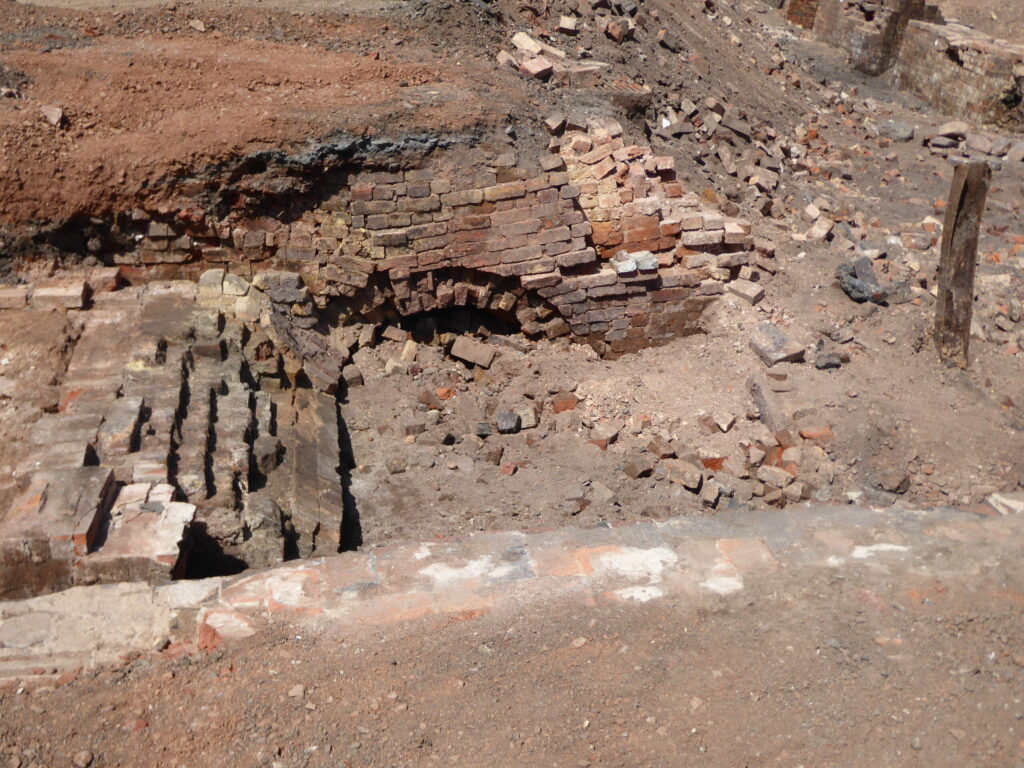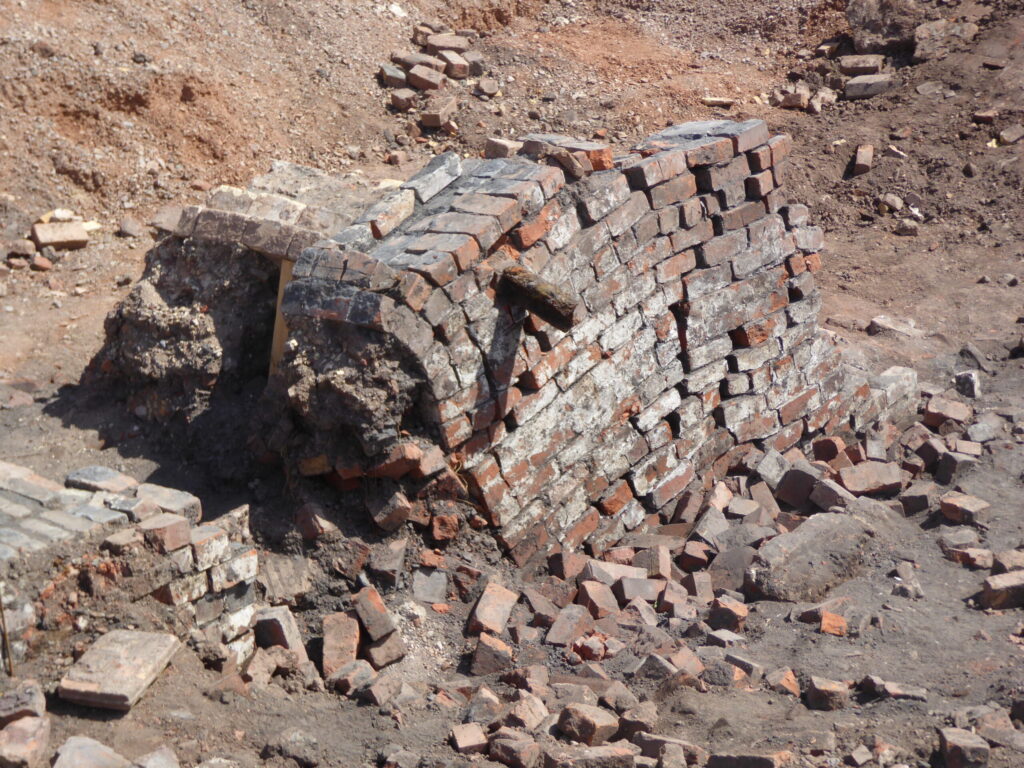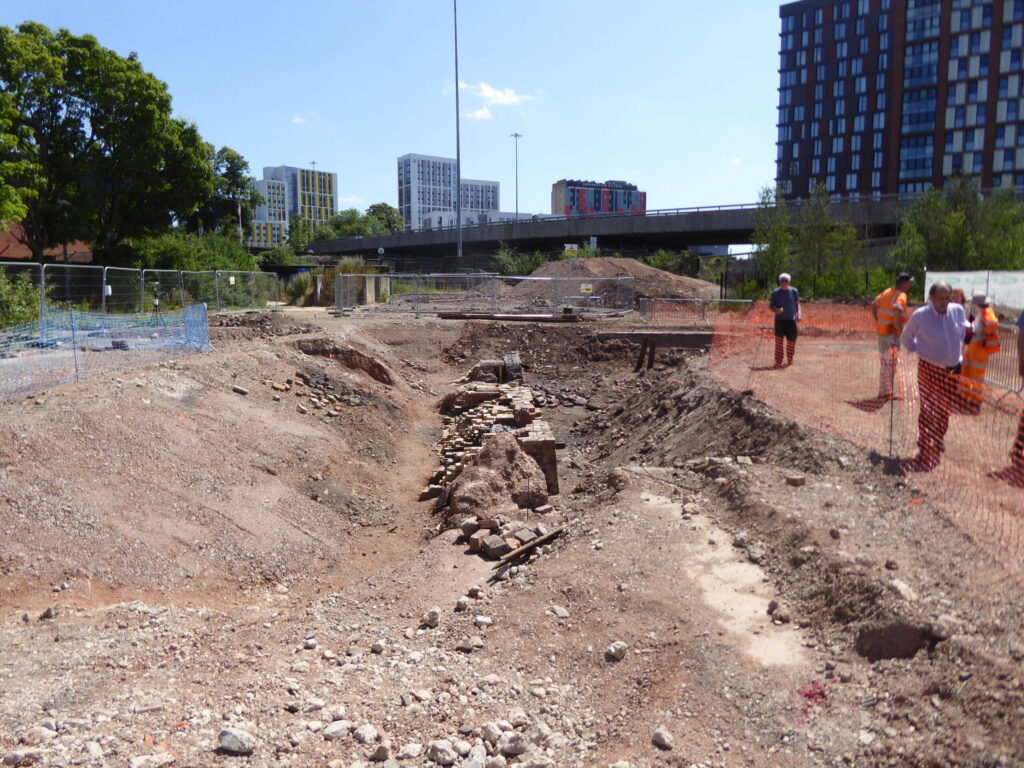
Archaeology Warwickshire held an Open Day at the former Abbott’s Lane Gasworks site last Friday. The dig is revealing a lot about the one of the oldest gasworks sites in the country.
There has been a gasworks on the site since 1820 and this was only the second such gasworks in the country, after Warwick. The site was rebuilt in 1851 and 1856 and it was these remains that are at the heart of the archaeological dig.
The main visible remains were of the Retort House, where coal was heated to release town gas. Excavation has found 42 different types and makes of brick, including one with dog paw prints on it. A couple of the brings were from Coventry, but most from Stourbridge.
Coal was brought to the gasworks by horse drawn wagons from the nearby Coventry Canal Basin and later from a siding at Coundon Road station. The remains of Gas Street cross the site and square granite cobbles have been removed from the original road surface, which has long been covered by development. The former Gas Tavern stood at the corner of Gas Street.
The gasworks site adjoined the medieval Naul’s Mill, which was used as the city council’s stables in the Victorian era and is now a tyre depot. Nearby a historical incident took place in 1824 when balloonist Charles Green launched his balloon from next to the gasworks where he had filled up with gas. Green travelled around the country filling up his balloons from such gasworks as town gas was more available and much cheaper than hydrogen.
Intriguingly there is a small square brick structure on site which pre-dates the gasworks and is not shown on any maps of the area. The brick is thought to date from the eighteenth century.
Archaeologists are planning to extend the dig at the gasworks to reveal other parts of the site before it is released for development. A planning enquiry was recently held to hear the appeal against the Council refusal of planning permissions for the Abbott’s Park scheme. A decision is awaited.
